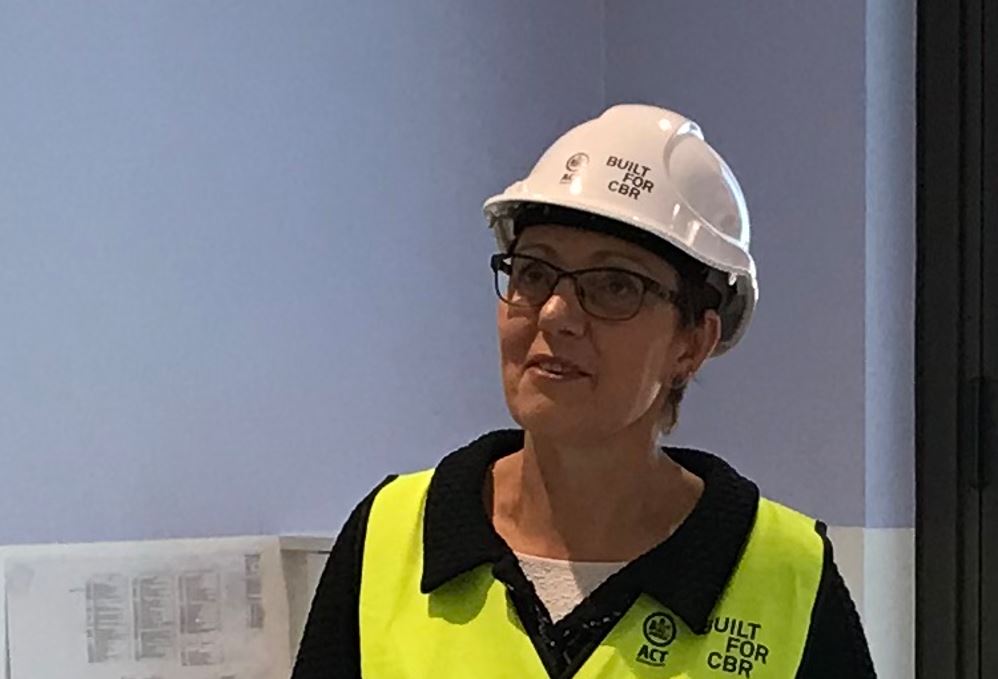ACT health minister Rachel Stephen-Smith has returned from a national meeting of her peers in Brisbane on Friday.
Top of the health ministers’ agenda was the new National Health Reform Agreement. The Commonwealth will increase its NHRA funding for public hospitals to 45 per cent by 2035, and to 42.5 per cent before 2030, Prime Minister Anthony Albanese announced after a National Cabinet meeting in December. The ACT government pays the largest share of public hospital funding from any state or territory government: 65 per cent.
State and territory health ministers are united in calling on the Commonwealth Government to deliver that agreement, Ms Stephen-Smith said.
“It was a previous Labor government [Julia Gillard, August 2011] that originally entered into the National Health Reform Agreement with a target of getting to a 45 per cent Commonwealth contribution,” Ms Stephen-Smith said.
“We haven’t got there yet. And indeed, over the last few years, because of the cost pressures that we’ve faced, because of the demand pressures that we’ve faced across the country, actually, we’ve seen the share of Commonwealth funding to hospitals go backwards.”
The health ministers, Ms Stephen-Smith said, also want to ensure that the NHRA is “genuinely a reform agreement, not just a hospital funding agreement, looking at the intersection between primary care, community-based care, aged care, disability, and our hospitals, because we know that all of those things are connected.
“And if the primary care system isn’t working, it’s putting more pressure on our public hospitals – and that’s exactly what we’ve seen after a decade of neglect to primary care under the previous Coalition government.”
Emergency department’s ‘impressive’ improvements
Last week, the Australian Medical Association’s Public Hospital Report Card stated that hospitals nationally were “at breaking point”, and that the ACT public hospitals were not meeting national standards for emergency department wait times and planned surgeries, despite the “tireless efforts” of hospital staff and the local government’s 65 per cent funding.
For the fifth year in a row, the ACT had Australia’s worst performance in meeting the ‘four-hour-rule’ (National Emergency Access target, or NEAT): only 48 per cent of emergency department presentations were completed in less than four hours. The ACT was also the worst performer for planned surgery patients admitted on time: the number of Category 2 patients (procedures clinically indicated within 90 days) has fallen from 81 per cent to 49 per cent in six years.
Ms Stephen-Smith noted that the data included in the report was not new. However, emergency department performance had consistently improved throughout 2022-23, and that Canberra Hospital’s performance on the ‘four-hour-rule’ was now above the average national performance for that financial year.
“For a hospital of this type, that is really impressive,” Ms Stephen-Smith said.
“The ACT is unique in only having two emergency departments, one of them being sometimes about the third busiest emergency department in the country at Canberra Hospital, a major tertiary trauma centre, and the other one [North Canberra Hospital] being a busy metropolitan hospital. Most other jurisdictions have small regional emergency departments that have very good seeing on time and ‘four-hour-rule’ performance, which tends to then even out the jurisdictions.”
The ACT is also unique in having five nurse-led walk-in centres, whose data does not get counted in emergency department performance figures.
“But more people attend our walk-in centres every year than go to North Canberra Hospital,” Ms Stephen-Smith said. “Those are people who would otherwise be attending, in another jurisdiction, a smaller regional or metropolitan emergency department and being seen and treated quickly and being discharged. So again, that would contribute to their jurisdictional performance in a way that it doesn’t here. So it’s not an apples to apples comparison.
“But having said that, we knew that we had more work to do. That’s why we’ve been continuing to invest in additional staffing in our emergency department, but also in different models of care like the establishment of the Acute Medical Unit” – a high-acuity care service for adults at Canberra Hospital, whose beds will double from 12 to 24, Ms Stephen-Smith announced last year – “to draw those undifferentiated medical patients from the emergency department quickly, make sure that they’re getting the care that they need with a multidisciplinary team, and either getting that care in the AMU and discharged home, or understanding where the complexity in their case is coming from and being then further moved to the most appropriate sub-specialist ward in the rest of the hospital. That’s made a huge difference.”
So, Ms Stephen-Smith said, has the introduction of a ‘medical navigator’, a highly skilled nurse who works with the senior medical team to ensure patients are cared for in the right ED location and transferred to the right inpatient ward.
Likewise, the Digital Health Record ensures that the emergency department and the wards share information: “Everybody’s looking at the same medical record for that person, and everybody can see what treatment they have received in the emergency department already, and make some quick decisions about where that person needs to go next, if they need to be admitted to the hospital.”
“All of those things are contributing to our improved performance,” Ms Stephen-Smith said. “I know that both emergency departments have been very busy over the February period. So continuing to see that improvement maintained over the beginning of this year has been a really positive sign.”



